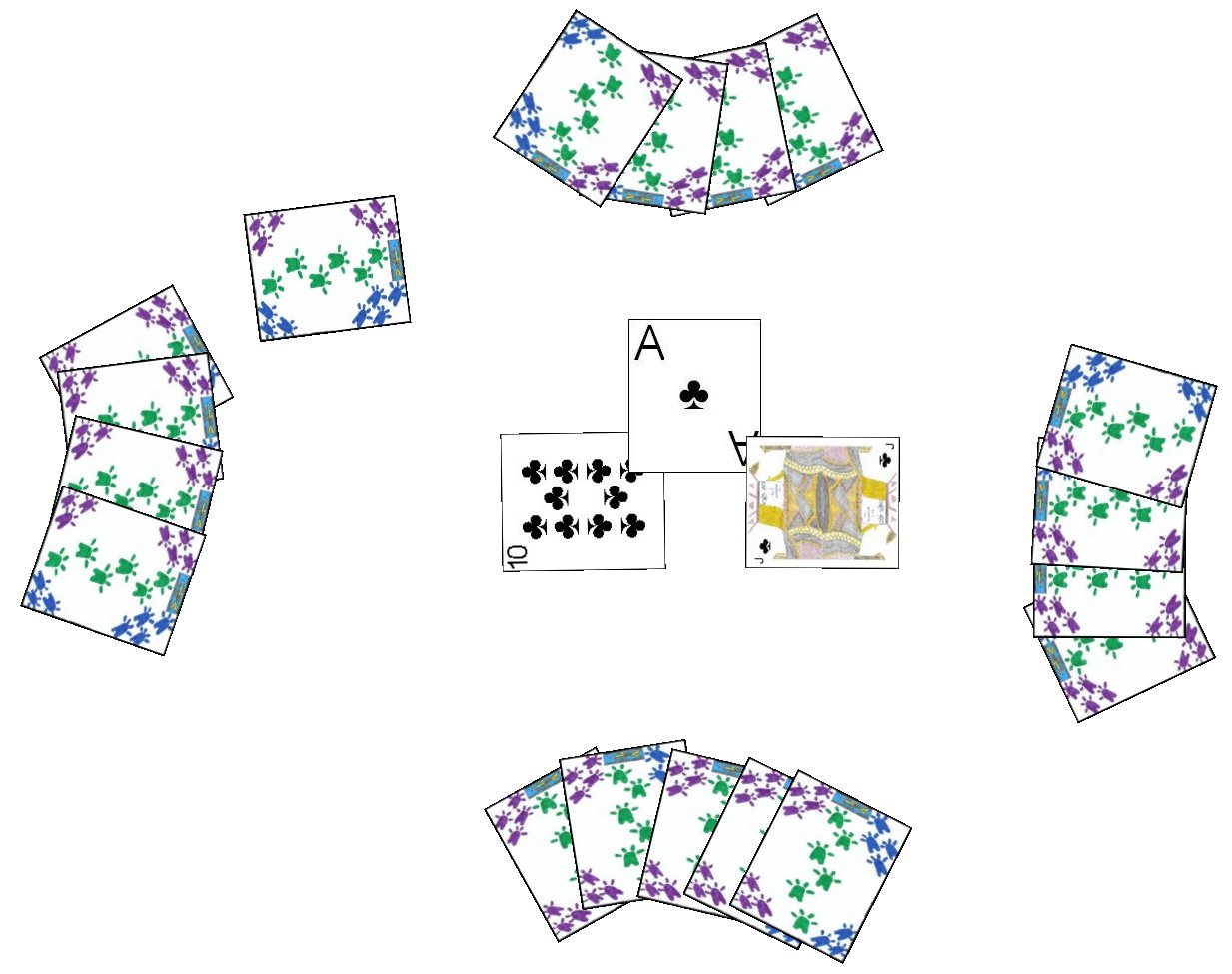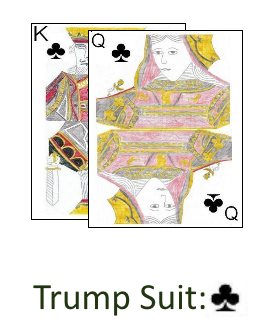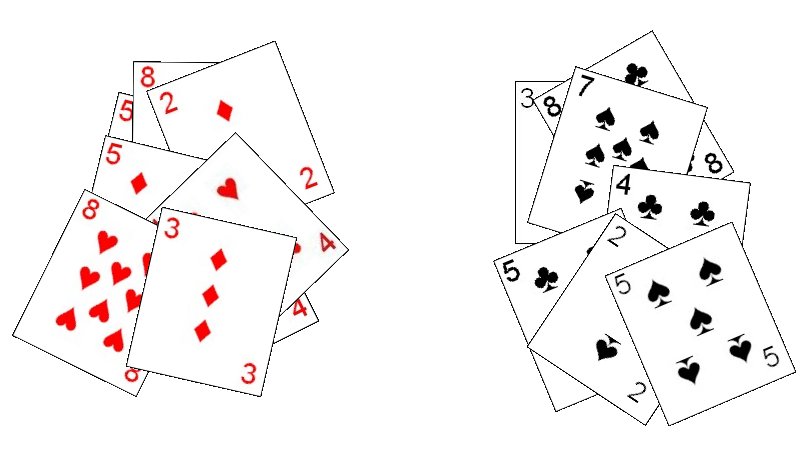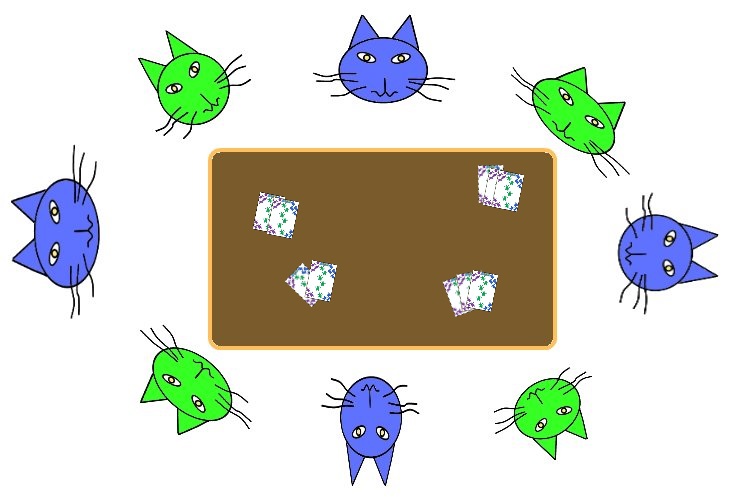
How to Play Twenty-Eight |

| Card | Card Point Value |
|---|---|
| Jack | 3 Each |
| 9 | 2 Each |
| Ace, 10 | 1 Each |
| King, Queen, 8, 7 | 0 |
 The first time that any player is unable to play a card to the suit led to the trick, that player has two choices. He may discard any card to the trick. He simply plays any card of his choice to the trick. This card can normally win the current trick (except in the event another player requests the exposure of the trump suit and the discarded card happens to be the highest card of that trump suit played to the trick). The player's second option is to call for the Bidder's face down trump card to be played. When this occurs, the bidder then turns over the face down trump card such that all can see it. He then adds the trump card to his hand. After that time, the suit of the card exposed is then considered the trump suit for the remainder of the hand. The Bidder himself can also call for the exposure of his own trump card on his turn when unable to follow suit if he wants.
The first time that any player is unable to play a card to the suit led to the trick, that player has two choices. He may discard any card to the trick. He simply plays any card of his choice to the trick. This card can normally win the current trick (except in the event another player requests the exposure of the trump suit and the discarded card happens to be the highest card of that trump suit played to the trick). The player's second option is to call for the Bidder's face down trump card to be played. When this occurs, the bidder then turns over the face down trump card such that all can see it. He then adds the trump card to his hand. After that time, the suit of the card exposed is then considered the trump suit for the remainder of the hand. The Bidder himself can also call for the exposure of his own trump card on his turn when unable to follow suit if he wants.
| High Bid | Game Points Won if Bid made | Game Points Lost if bid not made |
|---|---|---|
| 14 to 19 | 1 | 2 |
| 20 to 24 | 2 | 3 |
| 25 or Higher | 3 | 4 |

|
|
 |
 Eight Player Fifty-Six: Similarly, an eight player variant of the game
Fifty-Six has been developed. This game is designed to be played by two teams of four players each. Each player should be seated in such an arrangement that he is seated between two opponents at the table.
Eight Player Fifty-Six: Similarly, an eight player variant of the game
Fifty-Six has been developed. This game is designed to be played by two teams of four players each. Each player should be seated in such an arrangement that he is seated between two opponents at the table.